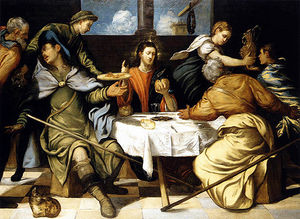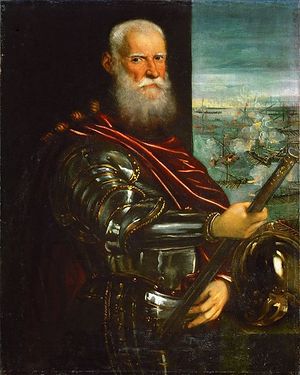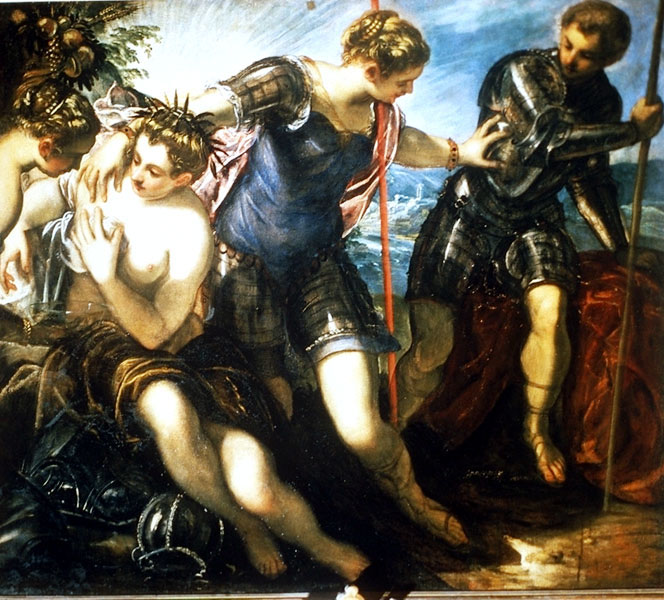Tintoretto
 From Conservapedia
From Conservapedia Jacopo Robusti ("Tintoretto") (1518–94) was a venetian artist of the Renaissance period. He was a master by 1539, but no works can be ascribed to him until 1545. He was a mannerist in style, attempting to achieve an ideal art by merging the styles of Titian and Michelangelo, although perhaps without reaching the heights of either.
The name Tintoretto comes from the family trade - his father was a dyer (tintore in Italian).
In his early works he places his figures across the picture in a frieze, placing interest throughout the picture while keeping the principal subject in the center. Typical of this style is Miracle of the Slave, one of a set of paintings depicting Saint Mark. this picture is full of action, and with his typical use of light and shade, but with the central incident prominent. Later paintings were to become more alive with incident, with receding diagonals to increase depth.
In later years he took on huge projects, painting interiors for the Doge's palace (the Paradise of 1574-7) and the Scuolo de Santa Rocco (large paintings of the Virgin Mary and Christ, 1576–88). these paintings display his full extent of ability: unexpected viewpoint, contrasts of scale, unusual movement and visionary use of color and shade.
He is remembered today as the principal exponent of Northern Italian Mannerism.
Major Works[edit]
- Miracle of the Slave (1548)
- Paradise (1574-7)
- The Brazen Serpent (1576)
- The Adoration of the Magi (1582)
- Crucifixion (ca. 1587)
Minerva Repelling Mars, 1578.
See also[edit]
Categories: [Italian Painters]
↧ Download as ZWI file | Last modified: 02/17/2023 07:23:41 | 3 views
☰ Source: https://www.conservapedia.com/Tintoretto | License: CC BY-SA 3.0
 ZWI signed:
ZWI signed:


 KSF
KSF